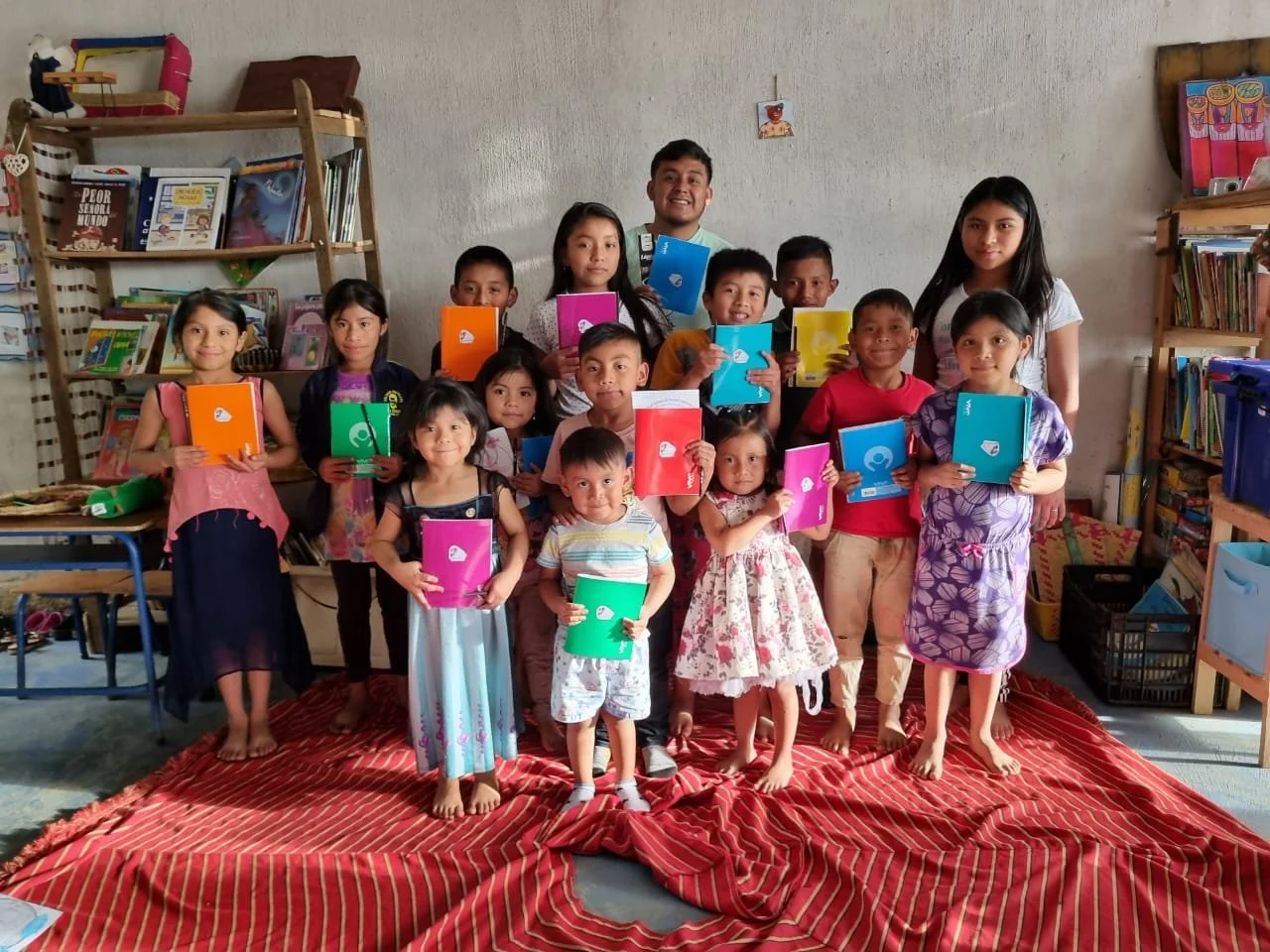Beyond Words: How Guatemalan Teachers Use Literature to Inspire and Transform
As a child, María Saquic fell in love with literature. To her, books weren’t just stories; they were a way to explore her feelings and see life from new perspectives.
Now, as a teacher trained by the Global Learning Exchange Initiative (GLXi), Saquic brings that same passion to her students in Quiché.
“Every time I read The Little Prince, I’m reminded that what’s essential is invisible to the eye,” she says.
To help her students understand this, she read them the part where the fox talks about creating bonds. Then, she asked them to draw someone important in their lives and explain why.
“The kids talked about their grandmas, their siblings… it was so moving to see them connect their emotions to a text,” she recalls.
Finding Magic in Books
“I’m like Matilda,” says Alvaro Tipáz, a second-grade teacher in Joyabaj, Quiché. “Books have always been my safe place.”
Inspired by Matilda by Roald Dahl, a story that deeply influenced him during his teacher training, Tipáz brings that same wonder into his classroom.
During a guided reading session, he read a simplified chapter where Matilda discovers the library. Then, he took his students to their small school library and told them to pick a book “like it was hidden treasure.” The kids were thrilled; some even said they wanted to be as smart as Matilda.
Later, when writing their own stories, a girl named Heidy titled hers The Girl Who Read in Her Dreams. When asked why, she replied, “Because Matilda also dreamed about reading, and I want to dream like her.”
Tipáz believes reading and writing aren’t just about letters and sounds—they’re about sparking emotion and imagination. He also uses passages from Alice in Wonderland to inspire creativity:
“I read the part where Alice falls down the rabbit hole and ask, ‘What would happen if you fell into a magical world?’”
His students then wrote their own “underground adventures” and displayed them proudly in the classroom.
Thanks to his GLXi training, Tipáz says he’s learned not just to teach reading, but to teach students to love it:
“When you read to children with your heart, they read with their soul.”
Teaching Empathy and Embracing Differences
At EOP Anexa a EORM Antonia Estrada Monzón in Quetzaltenango, teacher Heidy Aguilar used The Cow That Said Oink by Bernard Most to show her students the value of being different.
Before reading, she asked the children to make animal sounds, then opened a discussion about feeling different.
One student, Pedro, shared, “I don’t talk like the others because my language is Mam’.”
Aguilar turned this into a powerful lesson: being different can be special. The children then drew multicolored cows and wrote what made them unique.
Through the Open Books, Open Minds program, teachers learn to use onomatopoeias and symbols to bring stories to life and spark thoughtful conversations.
Energizing Teachers to Inspire Students
During GLXi training sessions, teachers read works like The Element by Ken Robinson to help reconnect with their passion for teaching. One teacher reflected: “I used to think I only taught letters, but now I see I teach dreams.”
Other recommended books, like Stories for Thinking by Jorge Bucay, help teachers introduce emotional themes simply. Teacher Isbenia Franco shared The Chained Elephant with her third graders. Afterwards, they made a mural where each student wrote down an emotional “chain” they wanted to break free from.
“One little girl wrote, ‘I want to stop being afraid to read out loud’... now, she volunteers to participate,” Franco says proudly.
GLXi also encourages teachers to read Trees Die Standing Tall by Alejandro Casona, a play that invites creativity, performance, and deeper reflection.
Celebrating Traditional and Classic Tales
In many rural classrooms, Guatemalan folklore remains central to teaching. Adapted stories like Popol Wuj, The Legend of the Tatuana, and El Cadejo connect students to cultural roots.
Brenda García, a teacher in Quetzaltenango, starts each school year with The Rabbit and the Coyote, explaining, “These characters feel familiar because students hear about them from their grandparents.”
Teachers also share classic tales from the Brothers Grimm, such as Little Red Riding Hood, Hansel and Gretel, The Brave Little Tailor, and The Bremen Town Musicians. These stories don’t just entertain; they teach caution, courage, cleverness, and teamwork.
Ana Cárdenas, a preparatory teacher, holds “Classic Tale Fridays.” After reading, her class acts out the stories with shawls as capes, stones as breadcrumbs, and sticks as swords.
“It helps them understand the story with both body and heart,” she explains.
Once, Little Red Riding Hood sparked an important conversation about talking to strangers. One student shared, “I always tell my mom if someone talks to me on the way home.”
For Ana, that real-life connection is the greatest gift of classic stories.
Bringing Informational Books to Life
GLXi also promotes thematic books explaining how everyday things like bread, honey, chocolate, or milk are made. These books are written simply and richly illustrated to help students see where food comes from.
Teacher Josué Chumil used How Bread Is Made with his second graders. After reading, he asked them to interview someone who’d baked bread. One girl brought her grandmother’s recipe, and the class even got to taste homemade bread.
In another lesson, they read The Journey of Chocolate and discovered cacao grows in their own region. The students asked to visit a cacao farm, and soon, a field trip was organized.
“Literature sparks curiosity,” says Chumil. “A classic story makes them imagine; an informational book makes them ask questions.”
Teachers combine these books with art, writing, and even small dramatizations, often using recycled materials, to make learning hands-on and creative.
Supporting Teachers, Transforming Students
While Guatemala’s Ministry of Education sets broad guidelines, teachers often choose which stories and books best fit their classrooms.
GLXi supports this freedom by providing libraries (physical and digital) and helping teachers adapt materials to their students’ cultural and language contexts.
When teachers introduce literature creatively, students often gain more than reading skills: they build confidence and empathy.
Teacher Paula Raquel Pastor shares how her once-quiet student, Juana, found courage after reading The Girl Who Didn’t Say Anything.
“Now Juana raises her hand, reads aloud, and even joins dramatization games,” Pastor says.
This kind of growth is why GLXi champions literature, not just as a tool for literacy, but as a path to emotional connection, cultural pride, and transformation.




